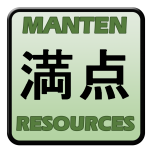When I first started teaching, it was common to teach with a textbook and a student workbook. Although textbook content was usually covered in class, the workbooks were less useful:
- They were too bulky to collect and mark.
- If I was marking them, they couldn’t be used in class.
- Schools tended to make students buy the workbook and share the class set of textbooks, even though the textbooks were more useful to the students.
- Access to the textbook was limited to the allocated class time, which prevented students from working outside of the teacher’s pedagogical time frame.
- I found many of the tasks were not very exciting or were only useful to a handful of students.
- Easy-to-use differentiated tasks were few and far between.
I wanted to take a more contemporary approach in the development of the Jblog student workbook; Jblog workbooks are PDFs with accompanying Google forms. The choice is yours as to whether you print off the whole booklet to work through, print off just the pages you want to teach in the order you want to teach them, or use the Google form equivalent of many of the tasks.
The listening tasks that support the workbook activities are free. They are not recorded in a studio and do not use professional actors. Instead costs are kept to a minimum by recording the many young Japanese visitors we meet, with regional accents from Okinawa to Hokkaidou, complete with background sounds such as birds singing. Our theory is that it is highly unlikely that your students will ever have a conversation with a professional voice actor in a soundproof room. So why practise for a situation that will never occur? These listening tasks prepare them for reality. Most listening tasks are also differentiated according to our ski run system. (Read more about this system in the textbook overview section of the website.)
The student workbooks are free to schools where students have purchased their own textbooks.
Class sets can, of course, be purchased instead. We recommend purchasing enough copies for one book per student for the academic year. The aim is to have students teaching themselves using the textbook as their resource. Providing access only during class time sends a message that learning is teacher-led rather than student-centred.
If class sets are being used, access to all the student workbook materials can be purchased at a cost of $515 per school. A log-in is provided which enables you to download the materials available, and use on any school platform, such as Google classroom. Once purchased, these materials are the property of the purchasing school. Email Manten Resources to discuss your school situation and find what works best for you.
Sample teacher marking guidelines are also available for workbook tasks at a cost of $60. This covers the answers for the eight work booklets that accompany one full textbook. The marking guidelines are available for each of the three textbooks in the series. A sample of the teacher marking guidelines for the Jblog Textbook 1 Chapter 1 student workbook is available for download on the link below.
New combined student workbook package
If you have purchased our student workbook resources pack (which includes 8 PDF work booklets for each chapter, teacher marking guidelines, sound files and google form tasks) you can now add on the combined workbook package for $50 for all three (ie Jblog 1, 2 and 3) or $25 each for one booklet (eg just Jblog 1.)
Why is this so handy?
This add-on package provides you with one PDF per textbook so that you can print off one booklet for the year if you wish.
It also provides you with the word document version though so that you can completely customise the booklet for you class! You can add in your favourite worksheets and activities; delete the provided ones that you never use and personalise each class booklet with photographs of your town, class etc.
This offer is only available to teachers who have purchased the student workbook resources pack.
